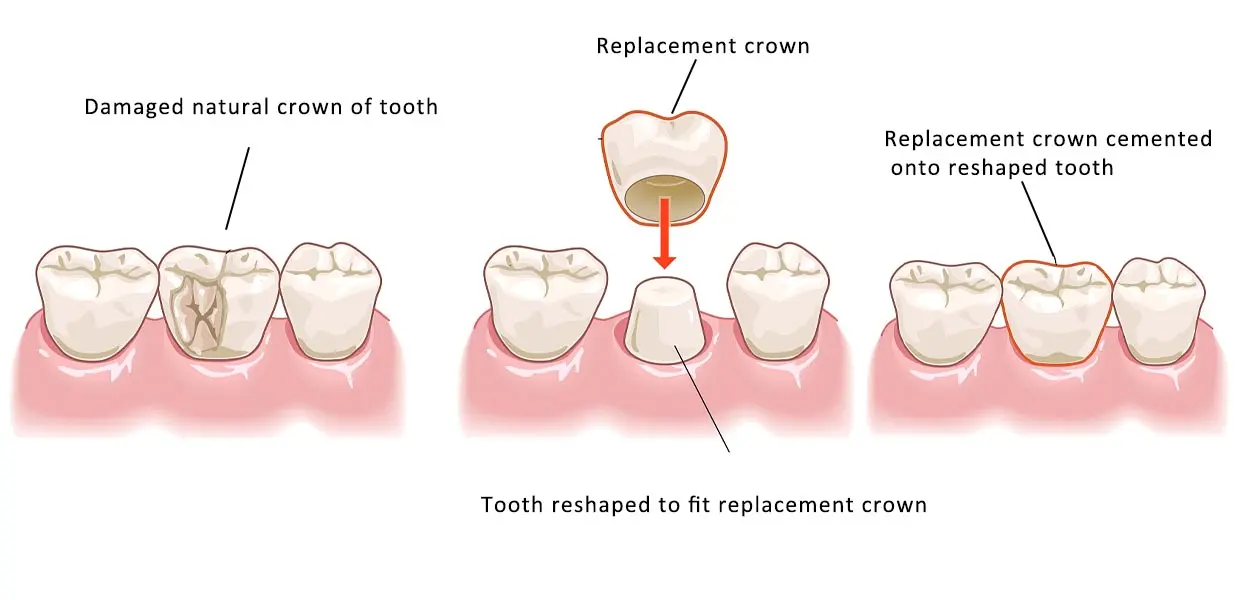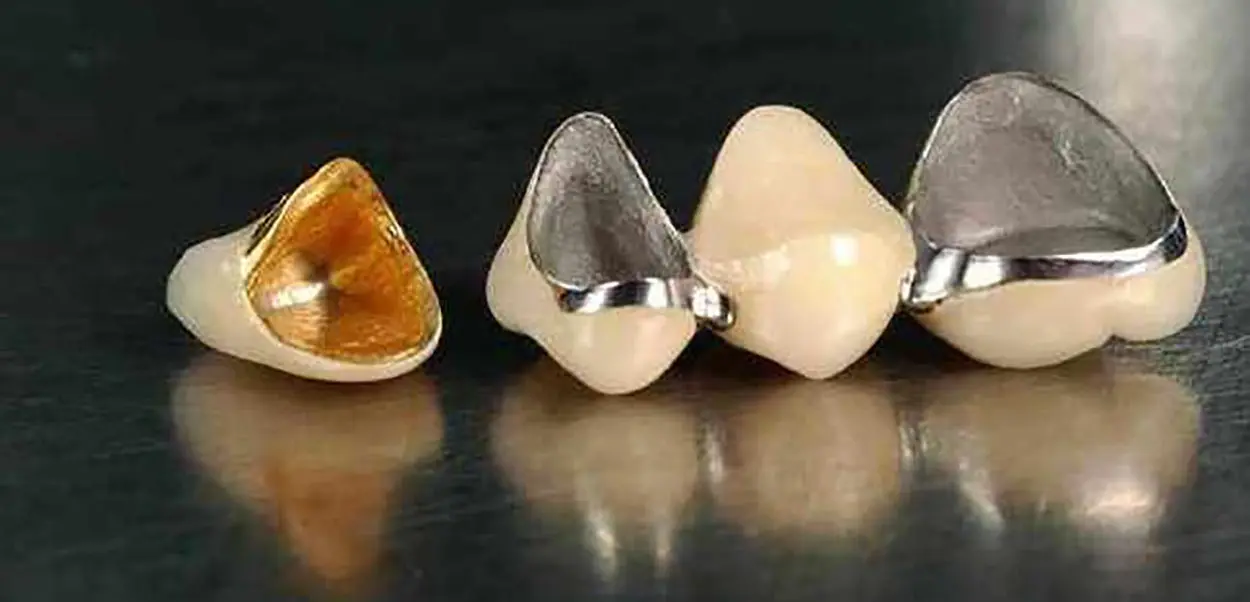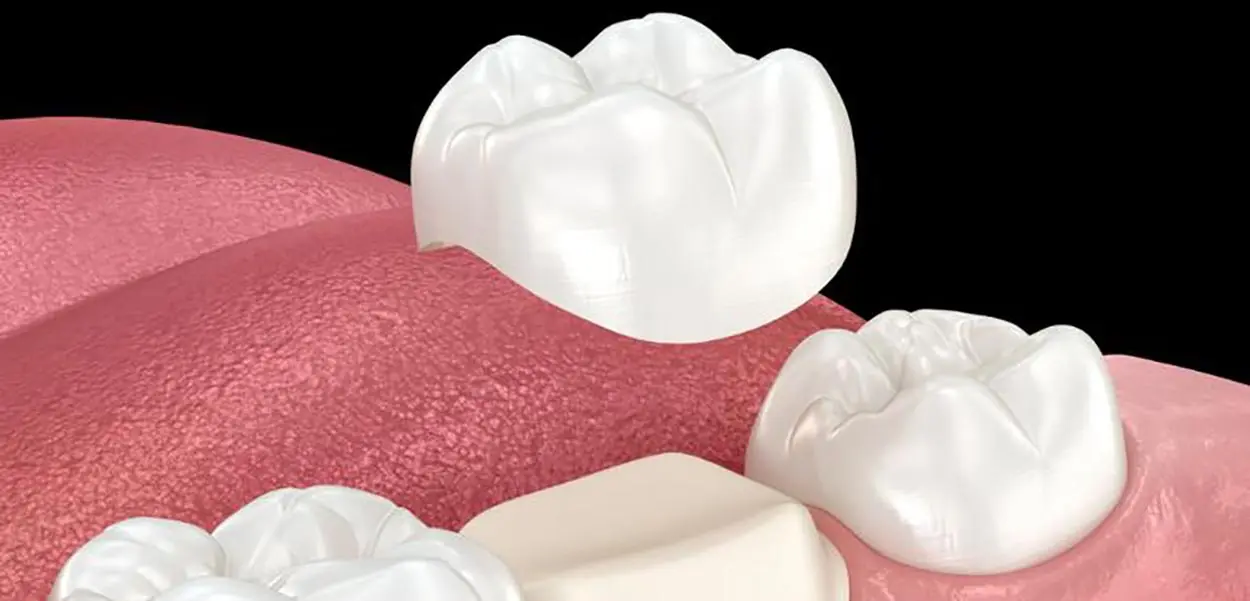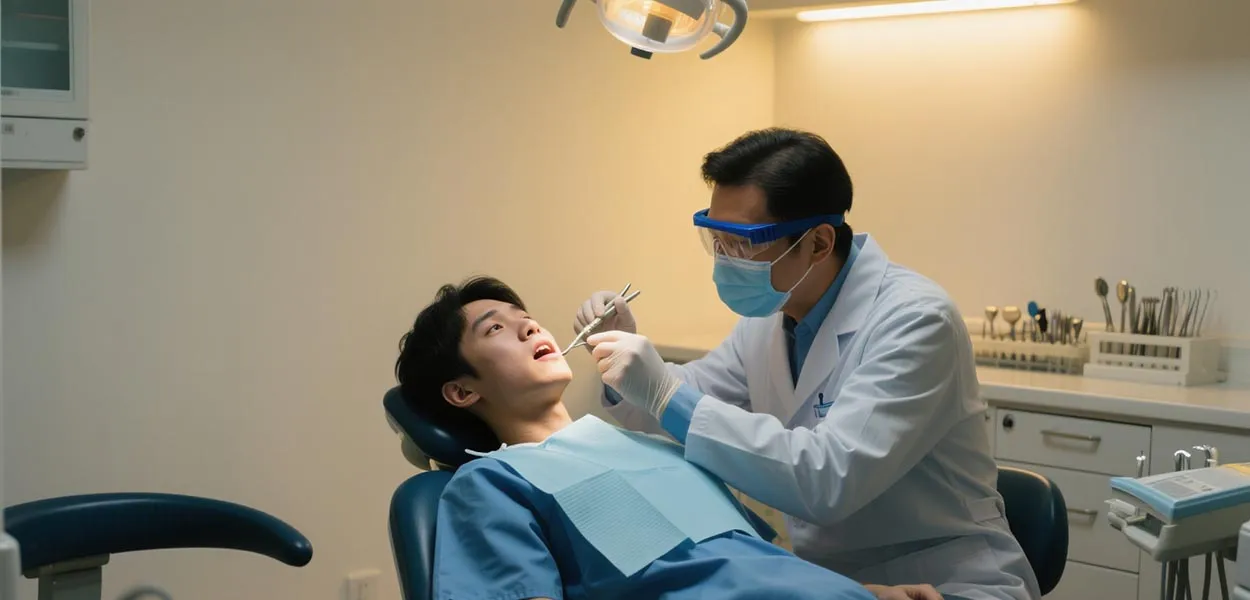1. Dental Crowns: Confidence in Your Smile
Dental crowns are a large part of modern restorative dentistry, providing a medical solution for damaged, decayed or cosmetically compromised teeth. This article covers types of dental crowns, costs, procedures and care tips. Whether you are restoring a broken tooth or enhancing the aesthetics of your teeth, we hope that reading this article will help you make your choice.
2. What is a Dental Crown?
Dental crowns are custom-made “braces” that are used to restore a tooth. When a tooth is damaged and difficult to repair with a filling, an artificial crown made from a variety of materials can be placed over a smaller natural crown (ADA). It covers the damaged tooth and restores its shape, strength and appearance. Crowns are made of materials such as porcelain, ceramic, or metal alloys that protect the damaged tooth and blend in perfectly with your natural smile.

3. Important Uses of Dental Crowns
- Crowns give an additional defensive layer to stop more damage.
- Restoration of broken or worn teeth: Fully functional restoration of trauma or wear damaged teeth is expertly accomplished.
- Hide stains, discoloration, or irregular forms to achieve a more harmonious grin.
- Serve as reliable support for bridges or implants: anchor dental implants.
- Strengthen structural integrity when large fillings cover considerable parts of a tooth.
4. Dental Crown Types: advantages and disadvantages
| Type | Material | Advantages | Disadvantages | Best For |
|---|---|---|---|---|
| Porcelain | Ceramic/Porcelain | Natural appearance, stain-resistant | Less durable than metal | Front teeth |
| Zirconia | High-strength ceramic | Durable, tooth-colored, good biocompatibility | Requires more tooth reduction | Front and back teeth |
| Gold Alloy | Gold, copper, or other metals | Extremely durable, minimal wear on opposing teeth | Metal color (not aesthetic) | Molars |
| PFM (Porcelain-fused-to-metal) | Porcelain fused with metal | Strong, affordable | Gums may darken over time | Back teeth |
| CEREC (Same-day) | Ceramic | One visit, no temporary crown needed | Limited to simpler cases | Small restorations |

5. Dental Crown Fabrication Steps
ⅰ. Ready Consultation
In the original phase of a dental crown treatment, certain intensive consultations with the concerned dentist will be given. He or she shall observe the tooth thoroughly and take X-rays to check on the condition of the surrounding tissues and tooth. Based upon these results, a decision will be taken as for the necessity of anesthetics to help in pain reduction.
Then, the crown serves to reshape the damaged tooth. However, the dentist must restore the damaged or decayed tooth first, usually employing filling material for reconstructing the missing tooth structure. This ensures that the crown will be placed safely on a fairly consistent basis.
ⅱ. Impression and Temporary Crown
Once the tooth is correctly shaped, the dentist will use a dental impression tray or sophisticated 3D scanning technology to record exact features of your tooth. This helps to create a custom-made crown reference.
While waiting for the permanent crown to be fabricated, a temporary crown will be placed over the prepared tooth. This temporary restoration typically protects the tooth for 2–3 weeks, preventing damage or infection while maintaining aesthetics and functionality.
ⅲ. Crown production
- Material selection:
Clinically used crown materials include:
Metal alloy crowns – cobalt chromium alloy, titanium alloy-based, with high strength and wear resistance, mostly used for posterior restorations
Porcelain crowns – metal base + porcelain powder sintering, taking into account the functionality and aesthetics Porcelain crowns: metal base + sintered porcelain powder, combining function and aesthetics, but there is a risk of metal oxidation and gingival staining
All-ceramic crowns – containing zirconium dioxide, glass ceramics, etc., with the light transmission and color of natural teeth, excellent biocompatibility, suitable for anterior aesthetic restorations
Casting crowns – molded through a special casting process.
Porcelain crowns – molded by special casting process, with excellent aesthetics but relatively low mechanical strength - Personalized design: parameterized according to tooth position, occlusal force characteristics and aesthetic needs
- Processing and fabrication: the fabrication period is usually 5-15 working days, during which a temporary crown may be required to protect the abutment.
ⅳ. Final Installation
- Adaptation:
Checking the edge-to-edge fit of the crowns, testing the occlusal contact points with articulating paper.
Adjusting the looseness and tightness of the adjacent zones, verifying the naturalness of the color transition under special lighting. - Bonding:
Bonding with dual-cure resin cement
Remove excess adhesive and polish crown edge
Immediate X-ray to confirm seating accuracy - Postoperative maintenance
It is recommended to avoid chewing hard objects for 24 hours, to clean the margins of the crowns regularly with a crevice brush, and to have a professional evaluation of the state of the crowns every year.
6. How to Take Care of Your Crowns
Good care is essential to ensure the longevity of your crowns:
- Maintain good oral hygiene
Floss around your crowns twice a day, which helps remove plaque and prevents inflammation of the gums (gingivitis) or other oral problems. - Avoid hard or sticky foods
Nuts/ice cubes/hard candies increase the risk of chipping all-ceramic crowns by 300%, and rice cakes/nougat may dislodge crowns.
Avoid putting too much pressure on the crowned tooth, especially in the first few weeks after the veneer is placed. - Schedule regular dental checkups
Visit your dentist every 6 months for a professional cleaning and examination. Your dentist will determine the stability of the crown and also check the health of the underlying tooth structure.
With proper care, your crowns can keep working for years, helping you regain your ability to chew well and maintain a bright smile.

7. FAQ
Q1. Dental crowns last how long?
Most dental crowns can last 10 to 15 years with good maintenance. Durability is greatly influenced by elements like material choice ( porcelain, metal alloy, zirconia) and oral hygiene practices. Routine dental examinations and expert cleanings can help to prolong their lifetime.
Q2. Is the Crown Procedure Painful?
Local anesthetic is given during the operation to guarantee no pain isexperienced. Some patients may have slight sensitivity following treatment; this is typical and usually goes away in days. Mild oral care (e. g. , using a soft-bristled toothbrush) and over-the-counter pain medications can help to reduce discomfort.
Q3. Are Dental Insurance covers crowns?
For medically required crowns (e. g. , to repair decayed or broken teeth), most dental insurance policies cover 50–80% of the cost. Check your policy details with your insurer before moving forward since coverage differs by plan and area.
8. Conclusion
A dependable approach to regain the condition and look of your smile is dental crowns. Choosing the best substance, talking with a dentist about your requirements, and dedicating to adequate maintenance will allow you to enjoy the advantages of crowns for years to come. This therapy gives a route to fresh confidence and oral health regardless of your choice between a conventional approach or a same-day alternative like CEREC.
Consult your dentist to discuss how dental crowns could fit your needs and assist you in having a healthier, more brilliant smile.



